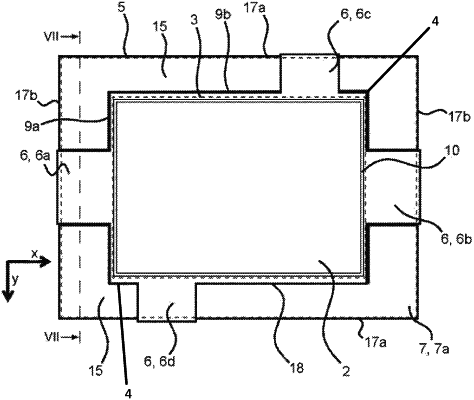| CPC H01M 8/0258 (2013.01) [H01M 8/0267 (2013.01); H01M 8/0273 (2013.01); H01M 8/242 (2013.01); H01M 8/2485 (2013.01)] | 7 Claims |

|
1. A fuel cell device, comprising:
a fuel cell stack, which is formed from a plurality of unit cells which are stacked one above the other in a stacking direction and which each have one or more media channels and a membrane electrode assembly arranged between two bipolar plates and which comprises a cathode, an anode and a membrane arranged between the cathode and the anode, wherein a sealing structure including a sealing tongue including a first plastic material covers the one or more media channels in the stacking direction, wherein the unit cells have an active area and an edge region which is located outside the active area and in which the one or more media channels are formed for guiding at least one medium into or out of the active area, wherein the sealing tongue including the first plastic material covers the one or more media channels in a gas-tight manner in the stacking direction in the edge region outside the active area, wherein a composite layer is applied to the edge regions of the unit cells, and wherein the composite layer includes a second plastic material having a lower thermal stability than the first plastic material; and
a plurality of media guides extending essentially in parallel to the stacking direction, wherein the media guides are connected to the bipolar plates of the fuel cell stack in such a way as to guide media into or out of the media channels of the unit cells of the fuel cell stack.
|